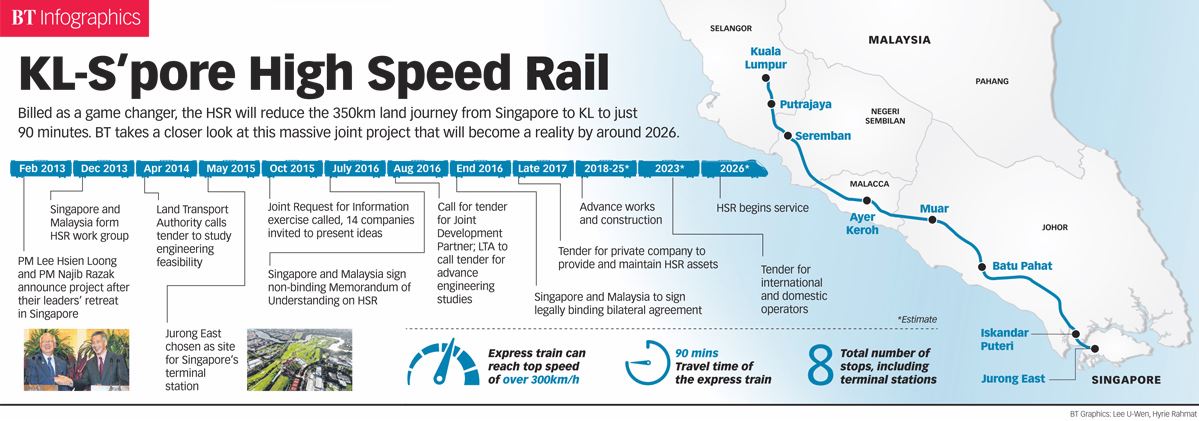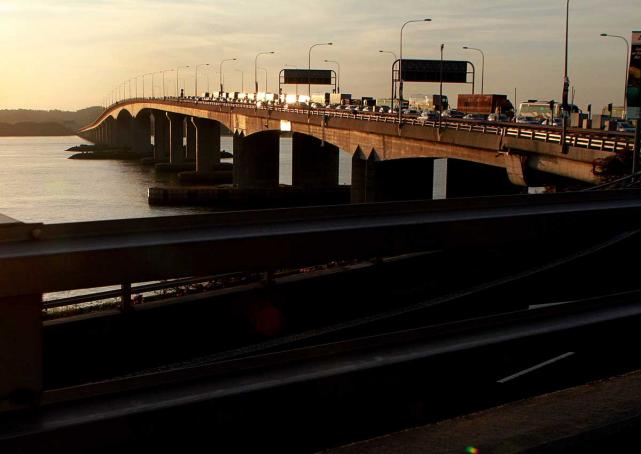SINGAPORE – The 2026 operational deadline for the Singapore-Kuala Lumpur High Speed Rail, though realistic, will not be easily met and requires political commitment for it to happen, a regional director for French rail company Alstom has said.
In an interview with The Business Times on Thursday, Jean-Francois Beaudoin, senior vice-president for the Asia-Pacific for Alstom Transport, also confirmed the company’s interest in becoming an asset company for the service.
Leaders from Singapore and Malaysia signed a memorandum of understanding in July to commit their governments to the 350km high-speed rail project. A legally binding bilateral agreement is expected later this year.
Mr Beaudoin said: “It really depends on how fast the various key decisions have to be made. For me, it seems realistic. It’s not a walk in the park – but massive projects cannot be a walk in the park.”
Alstom’s interest in the project puts it in the running with other companies from China and Japan, which have also signalled their interest lately.
In particular, East Japan Railway Company made a presentation to officials, saying that if it wins the bid, commercial operations can start at the end of the seventh year.
Mr Beaudoin was a bit more reticent on Thursday, saying that deadlines for the project need to be out soon for it to meet the 2026 deadline; technical specifications need to be issued so that civil works can begin.
The asset company, which will provide tracks and trains and be appointed through an international tender, will then join in before the service gets up and running in 2026.
But adhering to timelines is not enough for the service to be ready in 10 years, he said: “Beyond the timelines, if you want these kind of massive projects to become real, they have to be supported by very strong political willingness.”
For now, Alstom is actively speaking to officials on both sides to let them know the capabilities it can provide. Mr Beaudoin said that he hopes that doing this can help the authorities “frame the way they want to ultimately specify the technology that they will ask for”.
He believes that Alstom, with its 88-year history and global footprint, has gained enough experience across different eras and regions to put it in good stead for the bid to provide assets for the project. The company pioneered the TGV system, France’s intercity high-speed rail service.
“We have the specificities, the opportunity on our own, or, if it makes business sense, to address it in whatever form of partnership with other players,” he said.
Alstom is today a technological provider exclusively in the railway sector that provides rolling stock, after-sales service, signalling systems and related services, and infrastructural solutions.
Of its annual turnover of roughly 7 billion euros (S$10.7 billion), about half comes from trains and a fifth from services; signalling makes up slightly less than that.
It has about 33,000 staff across the world, about 3,700 in the Asia-Pacific. Alstom has been in Singapore since 1997, when it first registered real growth in Asia-Pacific.
While Alstom has had much experience in Europe matching up different railway infrastructure across borders, Mr Beaudoin said that the cross-border operations should not matter for the asset company of the Singapore-KL High-Speed Rail because the system is being built from scratch.
But what needs to be considered is whether Malaysian officials want to also have the high-speed trains serve existing stations with existing infrastructure, he added. This is “typically what high-speed trains in Europe do”.
Alstom’s possible edge lies in its double-decker trains – something its potential competitors do not have. These trains, at about 200 m long, can carry about 600 passengers, assuming a configuration of two power cars with eight passenger ones. A single-deck one can carry about 500 passengers. Euroduplex and Avelia are two of its double-deck models.

soonwl@sph.com.sg
@SoonWeilunBT

This article was first published on September 30, 2016.
Get The Business Times for more stories.






